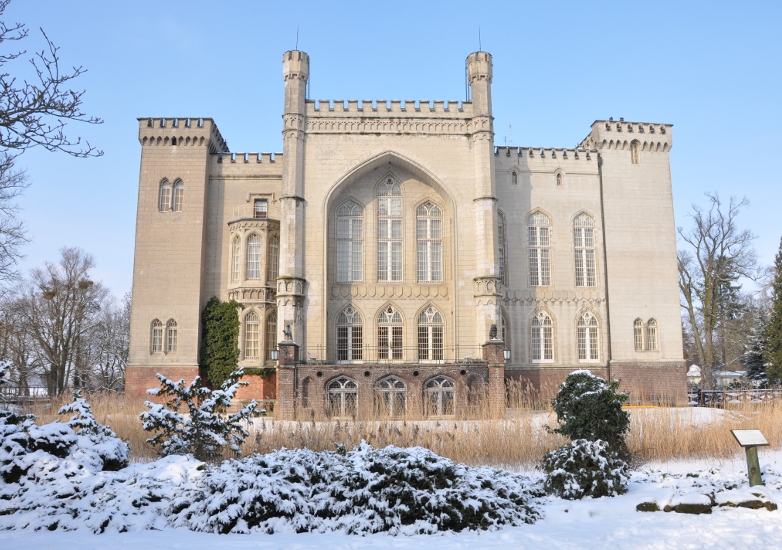
KÓRNIK
The city is situated on the eastern shore of Lake Kórnik in the Wrzesień Plain (Poznań County) between Poznań and Kalisz.
Kórnik Castle is one of the most frequently visited historical buildings in Wielkopolska. Two of Wielkopolska’s leading dynasties – the Górka family of the Łodzia coat of arms and the Działyński family of the Ogończyk coat of arms – are responsible for its existence and its splendour.
The castle was first mentioned in 1426 in a contract between the owner, Mikołaj Górka, and a carpenter working on it. The building comprises two defensive wings, is surrounded by a moat, and is accessible from the south via a drawbridge. Stanisław was the last owner connected to the Górka family. In 1574, he entertained King Henry III of France here. The Gothic building next to the north section was probably put up during his time.
The next owner was Inowrocław Voivode Zygmunt Grudziński. He welcomed King Zygmunt III (Sigismund III Vasa) to Kórnik in 1623.
The Działyński family purchased the estate in 1676. Teofila Szołdrska (Teofila Potulicka after remarriage) became the owner of Kórnik in 1732 and converted the domicile into a baroque residence with a garden. Teofila can still be seen in the dining room portrait during the day and as the famous White Lady haunting the park at night. There was a building in which silkworms were bred and next to which mulberry trees were planted.
Tytus Działyński inherited the estate in 1826. He made the castle his family residence and the place of safekeeping for his library and militaria collection. In 1828, the eminent Berlin architect Karl Friedrich Schinkel completed a design to rebuild the castle in the neo-Gothic style. The Moorish Hall, the largest in the residence, was reserved for the book, militaria and art collections. The Ogończyk coat of arms of the Działyński family and the Jelita coat of arms of the Zamoyski family adorning the facade and interior made it clear who owned Kórnik Castle. The Ogończyk and Pogoń (or Czartoryski) coats of arms indicate the next hereditary owners. The coats of arms of prominent Polish families on the dining hall ceiling and above the staircase leading to the top floor serve as reminders of the castle’s former owners.
The Voivodeship coats of arms in the Moorish Hall recall the splendour of the Polish state prior to the partitions. The residential quarters are on the second floor. Tytus left the estate to his son Jan. Most of the Kórnik library was kept in specially adapted rooms in those days. He also installed a museum in the castle. The garden was reorganised after the romantic fashion and the plant nursery was expanded.
Władysław Zamoyski inherited the estate, along with all its chattels, in 1880 when Jan Działyński died without an heir. Władysław Zamoyski was forced to evacuate Kórnik in 1885. When he returned in 1920, he was persuaded that the estate and its priceless library should benefit society. He therefore set up the “Kórnik Foundation” prior to his death in 1924 and bequeathed it all his Zakopane and Kórnik properties in his will. The Foundation began administering Władysław Zamoyski’s bequest once it was ratified by the senate in 1925. Since 1952, the castle and library have been administered by the Polish Academy of Sciences (Kórnik Library).
The interiors and furniture of the Działyński era have all survived. Paintings include portraits of erstwhile owners and the valuable objects they once owned are on display – alongside the militaria – in the museum interiors.
Address:
Zamek w Kórniku (Kórnik Castle)
ul. Zamkowa 5
Tel. +48 61 817 00 81
For more information, go to:
www.bkpan.poznan.pl/english








